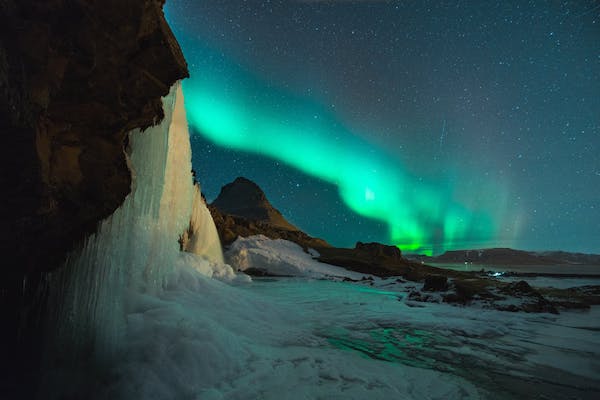Icelandic Folklore, Traditions and Superstition

It has been a long and fascinating history of Icelandic folklore, traditions, and superstitions. Since the dawn of time, Icelanders have been relaying fantastical tales of extraordinary encounters and celebrating unusual traditions.
Modern-day Iceland has all of the technology and knowledge of the 21st century, but these long-held traditions and tall tales still bubble beneath the surface, creating a melting pot of unique customs and culture that can only be found on this beautiful island.
Myths and Folklore
Storytelling and poetry have always been one of the most prevalent forms of entertainment in Iceland. The long, dark nights and brutally cold winters encouraged Icelanders to gather around the fire, sharing stories and telling tales.
These legends were passed down from generation to generation throughout the centuries, educating each new generation with tales of survival in a harsh and unforgiving wilderness.
These stories demonstrate the reverence Icelanders have with their environment and the spirits of the land, particularly elves, trolls, the Yule Lads, Land Wights, and ghosts.
Elves
A recent poll shows that 55% of Icelanders believe in the existence of elves, also known as Huldufólk (hidden people). These elves are said to live in enchanted rocks and caves where they live in much the same way as humans do, only to be seen on special occasions such as Midsummer’s Eve.
This in one myth that has lived in the Icelandic Folklore since the settlers got here around 874 AD.
Trolls
Trolls are said to live in the mountains, deep in the most unhabitable highlands. They are only able to travel at night and will turn to stone when hit by sunlight, which is why there are so many rock formations named after trolls in Iceland.
Yule Lads
The Yule Lads are 13 descendants of trolls who live in caves in the mountains. Their arrival in the winter heralds the start of the Christmas season, and the Yule Lads spend the 13 days leading up to Christmas Eve placing either rotten potatoes or treats into the shoes that children place on the windowsill.
If the children behave badly a rotten potato is likely to end up in their shoe.
Land Wights
The Icelandic coat of arms and króna coins bear the images of the 4 land wights of Iceland; the dragon of the east, the griffin of the north, the bull of the west and the mountain giant of the south, all of whom are said to be the protectors of Iceland.
Every year there are 4 competitions you can finish and earn the medal as Icelands certified Land Wight. Very popular amongst outdoor enthusiasts.
Ghosts
The ghosts of Iceland are said to be one of three things; either souls who haven’t left yet, zombies awakened by magic or poltergeists that target specific people. There is a Ghost Centre in Stokkseyri where visitors can explore the ghost legends of Iceland and take tours of Selfoss, where many entities are believed to have been spotted.

Superstitions
Iceland has a vast plethora of superstitions relating to everything from sheep to knitting in winter. If you move into a new home, bring bread and salt so that your home will never lack food. But don’t accept a gift of a knife, these must always be bought otherwise your relationship could encounter bad luck.
It is to be expected that there are a number of superstitions about the northern lights, one being that lots of activity in the lights forecast stormy weather, while the lights appearing later in the year means that snow will soon arrive. Iceland may well have the world’s most unusual superstition which is that if you see nine cows in a shed with a grey bull next to the door, and all of the cows are lying on the same side, then you will be granted a wish. Talk about tradition and superstition amongst the folklore!
The weather plays a big part in the lives of Icelanders, so there are many myths and superstitions around this. It is said that stepping on a blacksmith beetle or leaving your rake with the pins pointing up will bring rain, or if a white sheep appears in your dream then it will snow the next day. Don’t knit on the doorstep in the winter, either, as this will lengthen the winter by months.
Traditions
The Icelandic tradition of caroling at Halloween is one of the most bizarre customs for visitors. Halloween isn’t really celebrated in Iceland, but Ash Wednesday is usually the same week and sees Icelanders dress up and head out to sing for treats and candies. Bolludagur or “bun-day” is a holiday that revolves around eating sweet pastries and desserts all day, usually held around 2 months before Easter.
Bun day is followed by explosion day, "Sprengidagur", but on that day Icelanders fill their stomach with salted lamb meat and pea soup. A yearly tradition valued by all its inhabitants.
Summarizing the intricacies of the myths, legends, folklore, superstitions, and traditions of Iceland is impossible to do in one article. The aspects we have covered here are just a small-scale representation of what makes Iceland so unique. It is well worth investing your time in finding out more by visiting our beautiful country.